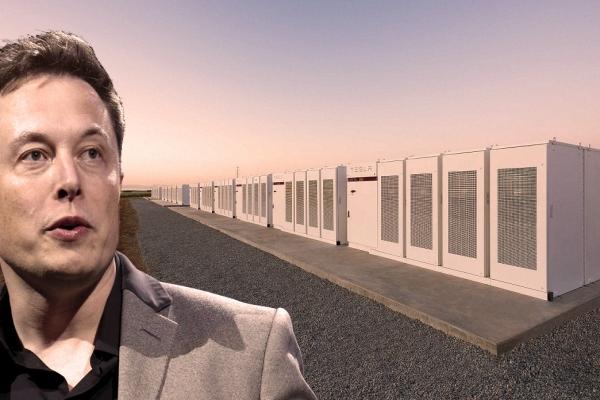Published on the 29/11/2017 | Written by Jonathan Cotton

SA gets a lithium-ion battery…in the most ‘Tesla’ way possible…
In between building kick ass cars, planning trips to Mars and just generally kicking ass, everyone’s favourite man on a mission, entrepreneur and tech impresario Elon Musk has just completely done something pretty amazing: He’s built the world’s largest battery, right here in Australia.
Located in Hornsdale, three hours’ drive from Adelaide, the project has unfolded in typically sensational Tesla fashion. Tesla’s energy product VP, Lyndon Rive had bragged in the press that the company could solve – if asked – South Australia’s energy supply concerns within 100 days.
It’s a bold claim, one the Twittersphere was interested to know if the company could make good on.
When asked if it was, indeed, a “serious” offer (by no less than Australian billionaire Mike Cannon-Brookes) Musk himself chimed into the debate, proclaiming on Twitter:
“Tesla will get the system installed and working 100 days from contract signature or it is free. That serious enough for you?”
Now it’s done – a 100,000 megawatt capacity Powerpack battery, the world’s largest – and it’s due to go live Friday.
In addition to being great PR for Tesla, the project aims to address, at least in part, South Australia’s ongoing energy woes. The state experienced serious blackouts, thanks to lightning strikes and at least two tornadoes – across the region late in 2016, affecting 1.7 million people, with further blackouts occurring at the beginning of this year. Furthermore, the state is currently staring down the barrel of a projected gas crisis: The Australian Energy Market Operator says South Australia could face critical gas supply shortages in 2018 if steps aren’t taken.
Tesla’s battery bank seems like a good start. SA currently gets its energy from a combination of renewable and non-renewable sources. During times of peak demand, electricity is imported from the eastern states. Forming part of the South Australian government’s $550 million energy plan, the battery is impressive in scope and execution, will only represent part of the energy solution mix in the region. The 100,000 megawatt Powerpack can produce enough to power 30,000 homes – around the same amount of residences that lost power during the 2016 blackout – but only for an hour, meaning the battery will stabilise energy supply in the region – but not replace existing sources (by our reckoning it could power all SA homes for about 2 minutes and 40 seconds).
“Tesla Powerpack will charge using renewable energy from the Hornsdale Wind Farm and then deliver electricity during peak hours to help maintain the reliable operation of South Australia’s electrical infrastructure,” said Tesla in a statement. “The Tesla Powerpack system will further transform the state’s movement towards renewable energy and see an advancement of a resilient and modern grid.”
Tesla enthusiasm for ambitious projects, or “leading from the front lines” in Musk-speak, doesn’t come cheap. The company is currently battling production problems for its Model 3 electric car, revising projections (shifting from an expected 5,000 Model 3 cars per week “during 2017” to “late Q1 2018”), and recently posting a loss of US$671m for Q3 2017, its largest yet.
Still, credit where credit is due: Tesla just built the world’s largest battery in 100 days, ostensibly on a Twitter bet. That deserves some praise, even if only for style – and no doubt some of that style was factored into the State’s business case around the PR opps.



























